If you want a wild animal as a pet, just don’t. Rethink that entirely. It’s not fair to the animal, and it’s probably going to lead to trouble.
At least we can agree on that if we go by what has happened to TV characters when they've adopted a wild animal as a pet. Yes, there are exceptions to the rule. The TV series Flipper (1964-1967) depicted a park ranger and his family befriending a dolphin that they name Flipper, and nothing bad happened.
In the series Gentle Ben (1967-1969), a park ranger and his family end up befriending a bear that they name Ben. Ben does not take the family out for lunch (literally).
And in The Life and Times of Grizzly Adams (1977-1978, although there was a 1974 feature film and a 1982 TV movie), a frontier woodsman named Grizzly Adams also has a bear as a pet or, if you prefer, a pal and calls him Ben (geez, with Gentle Ben already taken, they couldn’t think of another name?). The woodsman and bear become great pals.
But those were all TV families that had their "pet" more or less in his natural environment. When TV characters have tried to domesticate a wild animal, for the most part, they end up regretting it.
But, sure, if we go by what TV tells us, who would have thought? The best wild animal as a pet may just be a bear.
So if you’re thinking of adopting a bear (really, seriously, don't) or trying to sneak a hippo into your apartment, first, read The TV Professor’s “don’t get a wild animal as a pet” guide. Maybe it’ll help change your mind.
Today's "TV Lesson" Breakdown:
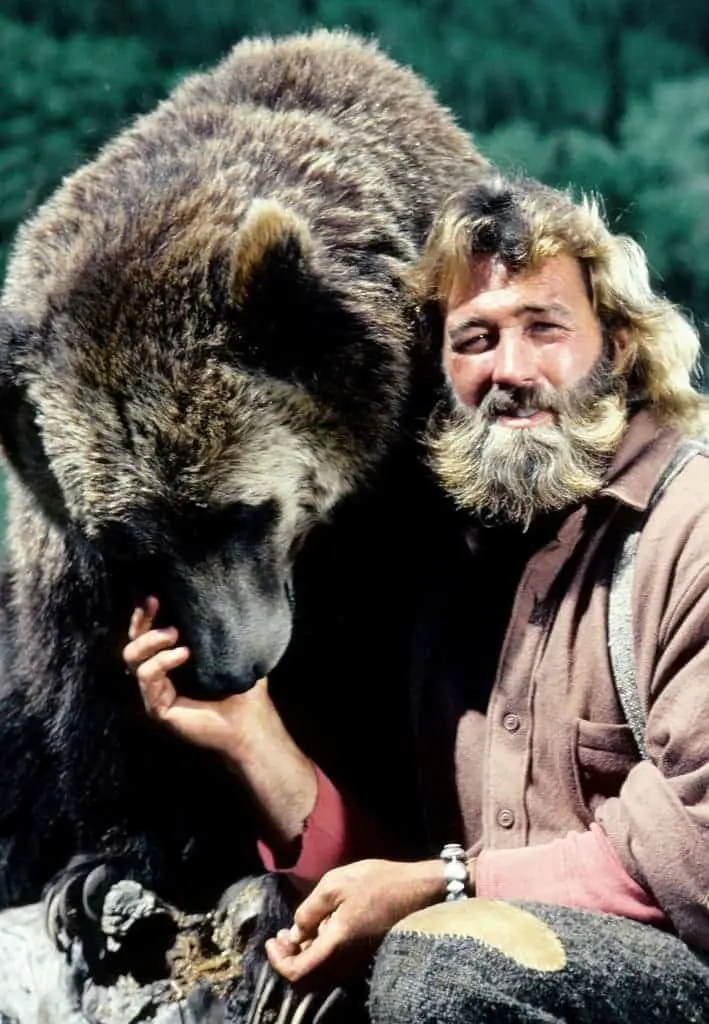
First, a few general thoughts about pets on TV
TV characters rarely have pets.
Not that they never do. Who could forget Tiger the dog on The Brady Bunch? Or Jack on Little House on the Prairie? On Full House, there was Comet. Petticoat Junction famously had a dog with no name on the series, and of course, Lieutenant Columbo had a dog that he not so cleverly named, “Dog.”
And Higgins – in the original and reboot – in Magnum, P.I. had Zeus and Apollo, Doberman Pinchers.
And, okay, of course, a lot of TV characters had Lassie on Lassie, which ran in various iterations for an amazingly long time – from 1954 to 1973.
There are probably a ton of other examples of TV characters owning dogs, and TV characters who were pet owners is probably a topic that The TV Professor should explore one of these days. That said, overall, you don’t see all that many dogs on television series. Or if you see them, they're fleeting glances.
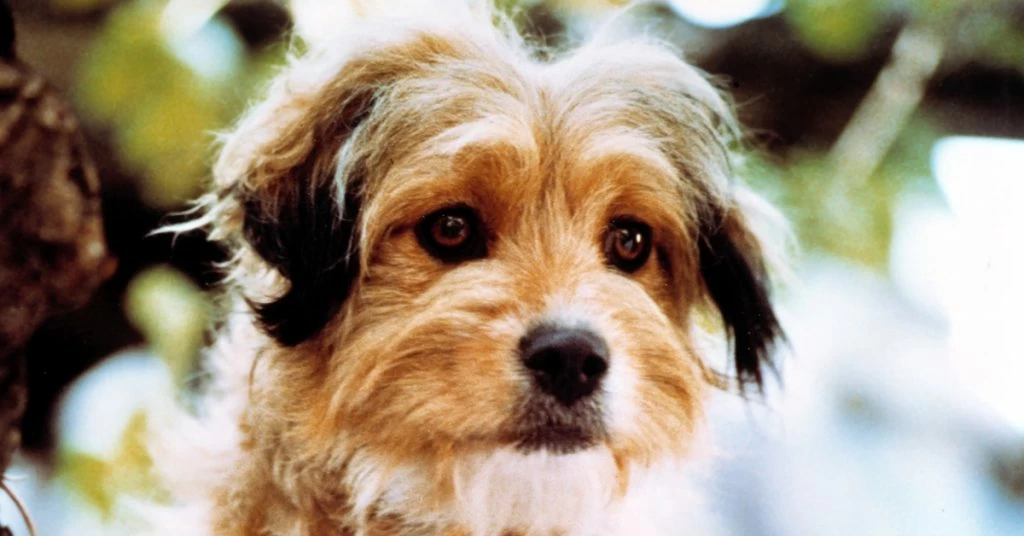
Cats seem to get fewer airplay on TV, but there have been some. Salem on Sabrina, the Teenage Witch, for instance. The Bradys had a cat in the first episode of The Brady Bunch, but I don’t think it was seen after that.
The Ziffels famously owned a pig, Arnold, on Green Acres.
Still, generally, pets on TV are just briefly seen and obviously for practical reasons. After all, if you’re going to have a dog or a cat on the set, you’re going to need to hire an animal handler.
But, anyway, let’s take a look at the times TV characters have tried to make a wild animal a pet.
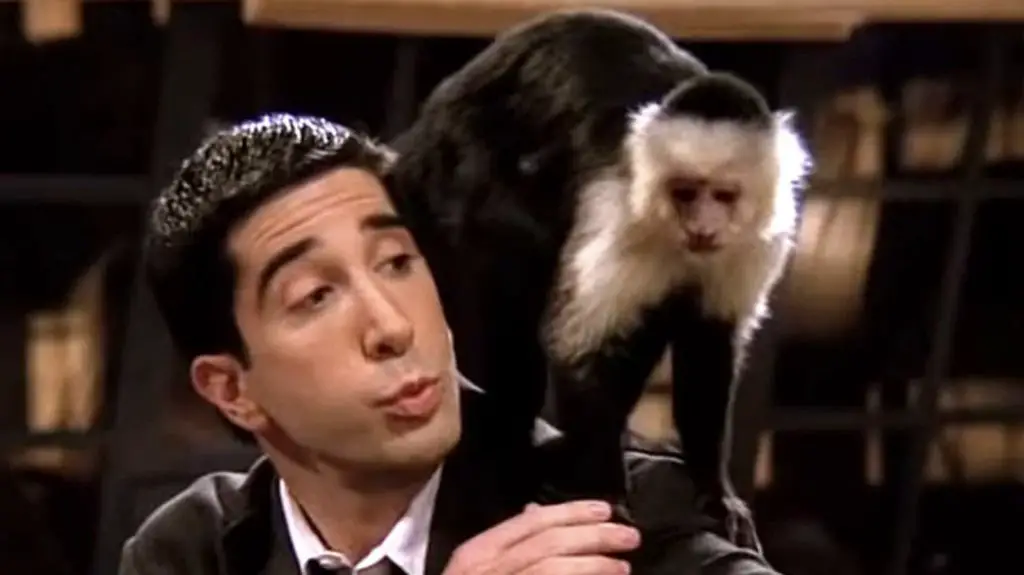
The seventh “friend” was a monkey
The pet
Marcel, an honorary “friend” on the TV series Friends (1994-2004), was a Panamanian white-headed capuchin monkey. In real life, Marcel’s name was Katie. Or is Katie, actually. To the best of my knowledge, she is still alive and well. White-headed capuchin monkeys live for about 40 years.
The owner
Ross Geller, a paleontologist, a smart guy who should have known better than to have a monkey as a pet. Which he did in the tenth episode of the first season, the episode called, “The One with the Monkey.”
Why Ross got the pet
His friend Bethel rescued Marcel from a lab. This is pretty shocking. I mean, Ross had other friends than Monica, Rachel, Phoebe, Joey and Chandler?
Anyhow, Ross should have found a good home for Marcel the moment he took him in, but with his wife Carol having left him, he was lonely. And who wouldn’t want a monkey as a pet? Still not smart, but you can see why Ross wound up keeping Marcel throughout the rest of the first season.
What went right
Well, Marcel fills a void for Ross. Who wouldn't want a monkey as a pet? Considering Marcel sticks around for about half a season of episodes, Ross (if not the actor playing him) clearly gets a lot of joy out of hanging out with the little primate.
What went wrong
Lots of things. Marcel plays with Monica’s spatulas, and if you know Monica, you know she isn’t happy. Also, Marcel isn’t pleased that Ross works so much. Ross explains to his friends shortly after getting Marcel, “We had our first fight this morning. I think it has to do with my working late. I said some things that I didn’t mean, and he – he threw some feces.”
Marcel also poops in Monica’s shoe.
But what really goes awry is that Rachel watches Marcel for awhile, and he escapes.
Rachel calls animal control, hoping they can help find him, and Ross isn’t too thrilled about that.
“Marcel is an illegal, exotic animal,” he tells Rachel. “I’m not allowed to have him in the city. If they find him, they’ll take him away from me.”
It all works out, where Ross gets to keep Marcel – at least through the first season. But Ross was taking a huge risk. He could have wound up in the slammer. For instance, when a woman from animal control shows up and gets wind that there may be a monkey on the loose, she says to Ross, Phoebe, Monica and Rachel: “Are you aware that possession of an illegal exotic is, uh, punishable by up to two years in prison and confiscation of the animal?”
Misreading the situation, Phoebe says, “Oh, my God. You’d put that poor little creature in jail?”
To which Monica says: “Pheebs, you remember how we talked about saying things quietly to yourself first?”
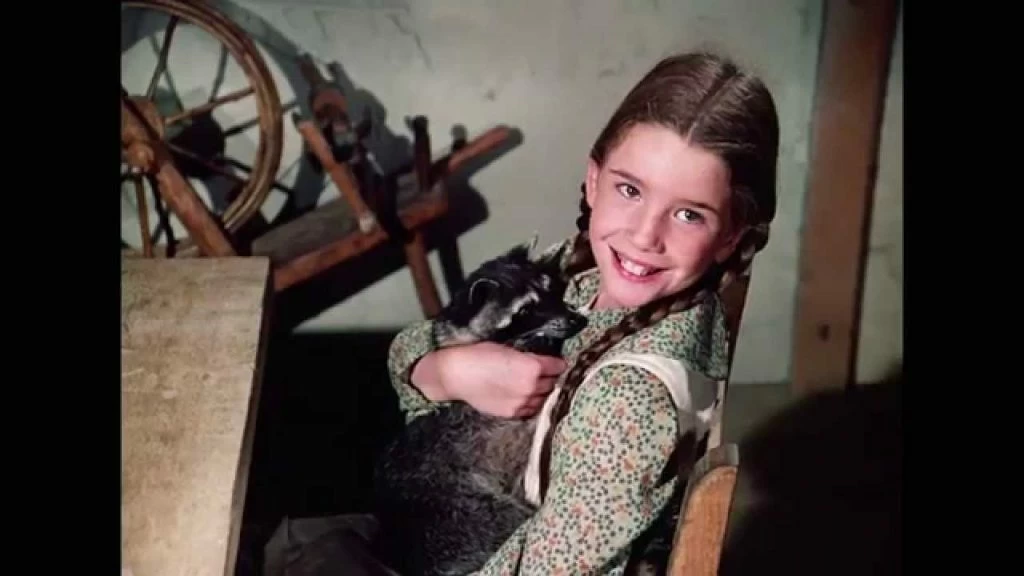
A little raccoon on the prairie
The pet
A raccoon named Jasper, who stole the show in the tenth episode of the first season of Little House on the Prairie (1974-1983).
The owner
Laura Ingalls.
Why Laura got the pet
Mary finds the baby raccoon in the woods – well, Jack, the Ingalls’ dog, really locates it, but then Mary does. Feeling badly for having broken Laura’s doll earlier in the episode, Mary gives the baby raccoon to her younger sister.
What went right
At first, everything is going just fine, although Charles Ingalls is none too happy when he sees the raccoon and wisely doesn’t think it’s a good idea for his daughters to have him as a pet.
“That animal’s not a kitten or a puppy dog,” Charles says. “He’s wild. He’s got no more place living in a house than you’d have living in a wolf den. Doesn’t make sense trying to make a pet out of an animal that was born to run loose.”
Laura and Mary point out how gentle the baby racoon is. Mary assures “Pa” that she wouldn’t have brought him home “if he was wild.”
“Mary, he’s gentle now because he’s a baby,” Charles says. “You wait a little while. That animal will be as big as a dog and nowhere near reliable. A raccoon like that could really hurt somebody.”
“Well, if he grew up with us, he’d be tame,” Laura says.
“Half-pint, if he was tame, he'd be the first tame raccoon I've ever seen, and I've seen an awful lot of them,” Charles says. “No more arguing about it. Just take him outside and play with him for a little while and then turn him loose, back in the woods where he belongs.”
Well, as you can imagine, the family comes up with a pretty good compromise. With Caroline’s urging, Charles decides that the girls can keep the raccoon for awhile.
“Hear that, Jasper?” Laura says. “You’re gonna be my pet.”
“Now, hold on,” Charles says. “He’s not going to be a pet. You’re just going to tend to him until he’s big enough to take care of himself, and that’s going to be a lot sooner than you think.”
He also won’t allow Jasper to be in the house.
“Well, Jack goes in the house,” Laura says, referring to their dog.
“Well, I think Jack’s a little bit different,” Charles says, and then referring to Jasper: “He’s going to stay in the barn.”
For awhile, that works just fine. Laura takes Jasper to school for sort of a show and wins rave reviews from Miss Beadle.
“You’ve done a remarkable job of training a wild animal,” Miss Beadle says. She then assigns her students to write an essay on what kind of wild animal they would all like to have as a pet.
What went wrong
But the reality of owning a raccoon hits home when Jasper breaks into the Ingalls home. He climbs through a window and gets into their food and makes a general mess. The girls aren't happy about it, but Charles decides to take Jasper into the woods and set him free. He puts him in a burlap sack and travels a fair distance and releases him. Satisfied, Charles returns home, only to discover that Jasper has beaten him there.
Knowing when he has been licked, Charles decides to build a cage for the raccoon, so Jasper can live in the barn.
Then things really spiral, though, when Laura tries to feed him. Looking at it from Jasper’s point of view (and Laura does), you can’t blame him for being frustrated. Here he was, living his best racoon life with the Ingalls, and now he’s in a cage, and there’s this crazy dog barking at him. So when Laura tries to feed Jasper, he bites her and flees the cage. But Jack is in his way, and so Jasper bites him, too. The fugitive raccoon, now on the lam, scatters into the wilderness.
Laura convinces Mary to promise to not mention any of the biting stuff to their parents. They’ll just give Ma and Pa most of the truth. Laura opened the cage, and Jasper ran away. No need for the parents to hate Jasper, and what if he comes back?
Well, it comes out later (Mary says something) that Jasper bit Jack.
Charles offers Laura a stern little lecture: “I'm gonna tell you, Laura Ingalls, Jack was lucky. Now, a raccoon like that could tear a dog apart. Look, I know you feel bad, but it's better for everybody. It's better for us, and it's better for Jasper.”
Well, as bad as all of this was, things get really bad when a raccoon comes back at night and attacks the chickens. Charles races to the barn and winds up killing the raccoon. Pa realizes the raccoon was rabid and assumes he has just killed Jasper.
Worried the family’s best friend now has rabies, Charles ties Jack in the barn. The next morning, Pa mentions to Mary that Jack needs to stay tied up. He fills her in that their dog might have rabies, and upon hearing that, Mary tearfully confesses that Laura may have rabies, too.
As fans know, it all comes out okay in the end, after some gut-wrenching scenes where you really fear for Laura and Jack. At this point in the 1800s, there was no cure for Laura, if it turned out she had rabies. Even now, there isn't much of a cure. According to the Mayo Clinic, rabies is almost a death sentence.
Thankfully, Jasper emerges, doing a trick he had been taught, proving his identity, and that he is healthy. Which literally saves Jack’s life. Because, convinced that a barking Jack has rabies, Pa was heading over to the barn to put him down. So Jack is going to be okay, and Laura is okay, and even Jasper is okay. But Jasper isn’t seen in future episodes because the Ingalls have learned their lesson – it isn't a very good idea to have a wild animal as a pet.
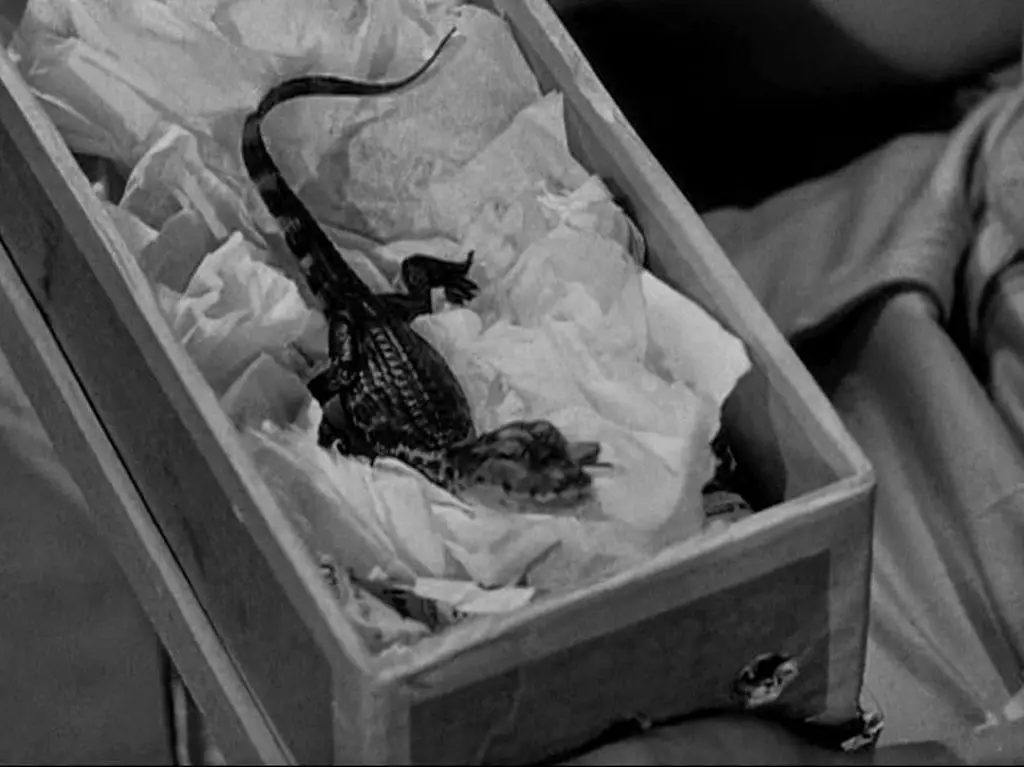
Leave it to Alligator
The pet
A baby alligator named Captain Jack.
The owner
Wally and Beaver Cleaver.
Why Wally and Beaver got the pet
It’s pretty interesting how it all unfolds. The year is 1957, and Wally and Beaver see an ad for an eight-foot alligator in a comic book.
Downstairs, June says to Ward that the boys are apparently ordering something once again through the mail. Ward Cleaver says, and he has never been more wrong, “Whatever they are doing, I’m sure it’s childish but harmless."
It sounds like a Hollywood invention, but ordering a baby alligator through the mail is the sort of thing that actually did happen. For instance, I found a Hartford Courant newspaper article from 1954 that reported how the dean at Wesleyan University in Middletown, Connecticut was mailed a baby alligator by students as a joke. It was actually the second time the dean had had this happen to him.
So it occurred some in the 1950s, but during the 1930s, baby alligators being sent through the mail happened fairly frequently. It was even advertised as a swell pet for kids.
A 1934 advertisement in Popular Mechanics raved: "Think of the fun, the thrills you will have with one of these Baby Alligators. Read how fascinating they are, how interesting. Study nature. Remember, the alligator comes down to us from prehistoric days, from the age of dinosaurs! Do you want a Baby Alligator? You bet you do. What boy wouldn't?"
All you had to do was pay $1.50.
A little over 20 years later, with inflation, Wally and Beaver were charged $2.50 for their baby alligator. He’s only about an inch or two long, which disappoints the boys. They were hoping for an eight footer. Geez, what were these kids thinking?
What went right
Plenty. At first, similar to Laura and Mary’s experiences with Jasper, getting a baby alligator in the mail didn’t seem like such a terrible plan.
For one, Beaver wants to keep him in the bathtub.
“Beaver, if we keep him in there,” Wally says, “we won’t be able to take a bath.”
“Yeah, it’s real good having an alligator,” Beaver says, approvingly.
Wally and the Beaver keep the alligator in the tank of their toilet, and it is here that we'll note that this is the first episode in television history to show a toilet inside a bathroom. Well, actually, the scene shows the top of the toilet. Apparently, the network was too squeamish to actually show the entire toilet.
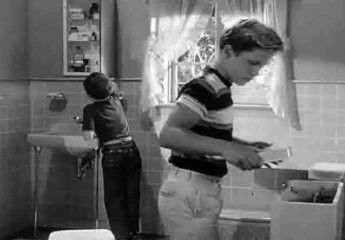
The boys decide to not tell their parents about their new pet. Later, though, they start to wonder if they should say something when their baby alligator seems to not be faring too well.
“We could ask Dad, but I don't know that he'd want us to have an alligator, even a little one,” Wally says.
They decide to definitely say nothing when they ask their father if they can have a pet.
“Now, we've been through all this before,” Ward says. “I have to tell you to wash up for supper. Your mother has to tell you to clean up your room. Now, when you show us that you can take care of yourselves, and your room, then we'll talk about a pet. That a deal?”
So the boys have decided – they’ll keep their pet and will take care of him. They will also say nothing to their folks.
Wally and Beaver go to Captain Jack’s Alligator Farm, to ask for advice.
Before asking, they go on a crowded tour of the alligator farm. Captain Jack does his best to make it clear to everyone that these predators can be dangerous.
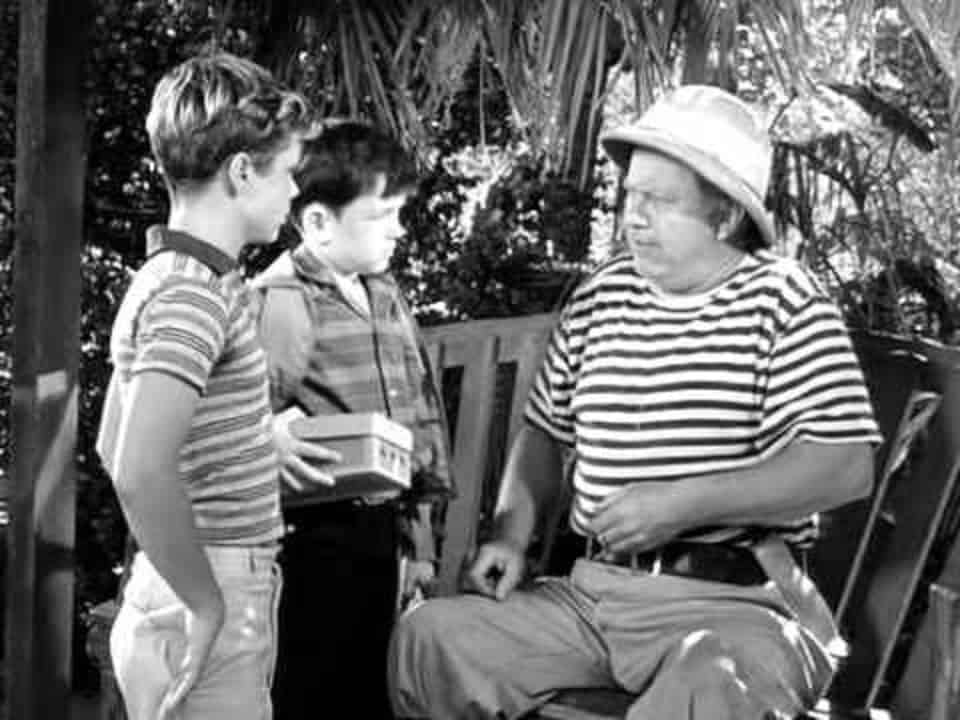
Captain Jack tells everyone in the tour that if an alligator were to get hold of your arm, it wouldn’t bite it off. No, it would chew it off.
“Yes, sir, the alligator would remove your limb from your body with a sawing motion of his powerful jaws. This may take considerable time, but the end result would be the same,” Captain Jack says.
You might think that this would make Wally and the Beaver say, “Hey, you know, someday our little pet will grow up and be dangerous,” but, no, that doesn’t appear to cross their minds. But I get it. They’re young. They’re thinking about today and not tomorrow.
So they end up showing Captain Jack their baby alligator, and he offers them some advice on how to take care of it. He suggests some warm milk, an egg and maybe a splash of brandy. Put it in an eyedropper and pry open the alligator’s mouth “and you get it right down in his little gizzard.”
He also suggests using some beauty cream on the alligator’s skin, so it doesn’t crack.
Beaver is so grateful for the wise counsel that he decides to name their alligator, Captain Jack.
It was good advice. The boys do an excellent job taking care of the alligator, and really, nothing goes too wrong for Wally and Beaver. The alligator doesn't poop in somebody's shoe, as Marcel did with Monica's shoe. Nobody becomes afraid they have rabies and might have to shoot a dog.
What went wrong
Well, Beaver is bitten, but not too hard. But mostly, it isn't easy, taking care of an alligator that is growing.
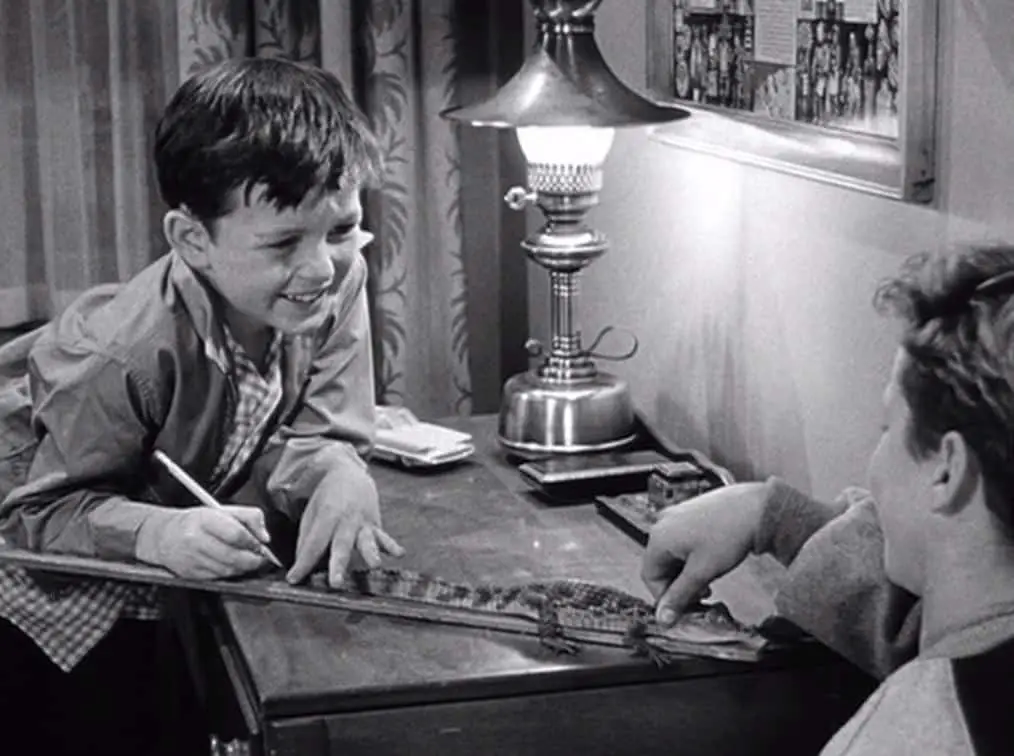
As their alligator gets older and longer, Wally and Beaver wind up putting Captain Jack in a washing tub in the basement, since he seems like he might be getting too big for their toilet tank – and he’ll be more hidden and out of the way down in the underbelly of the house. Nobody will find him there.
Only, of course, somebody does. Minerva, a housekeeper, went down to the basement. The Cleavers occasionally had housekeepers, especially if it served the story.
Before going downstairs, Minerva was acting really happy, which made Ward suspicious. Could she be the one filching his brandy? (He doesn't seem to have thought for one second that it might be his sons.) Well, when Minerva comes upstairs from the basement, terrified to have stumbled upon an alligator in a washing tub, that cinches it for Ward. The Cleavers do not have an alligator in their basement, and so she’s clearly bombed out of her skull. He marches her to the bus stop and fires her.
June, however, catches wind that her boys have been charging neighborhood kids to see the alligator, and she goes down to the basement to investigate. Yep, there’s an alligator down there.
Ward goes down there to look, gets a little bite (almost a sawing sensation more than a bite, he observes). He agrees with June. There's an alligator in their basement, all right.
Long story made shorter – the boys wind up giving Captain Jack, Captain Jack. Or put another way – Captain Jack, the foot-long or so alligator, goes to live at Captain Jack’s Alligator Farm.
Ward, meanwhile, is actually kind of proud of the boys. They did do a good job taking care of a pet, and a wild animal as a pet at that. So by the end of the episode, June and Ward proudly watch their sons playing – with their brand new puppy.
The puppy is very cute, and of course, the way these things often occurred on classic TV shows, we never see the dog again. We just have to hope or assume that the cameras somehow missed picking up the dog in future episodes. Or perhaps Beaver was allergic, and Minerva (who we also never see again) took in the puppy.
Or maybe the Leave It to Beaver producers simply didn’t have it in the budget for a full-time animal handler.
Where to watch these shows (at the time of this writing): Leave It to Beaver (the entire series) and can be found for free on PeacockTV.com.
Articles similar to this wild animals as pets one: There aren't really any animal care type articles on this blog, and maybe this is a stretch, since I know there are big differences between caring for a wild animal as a pet and a kid (and some of you are good-naturedly saying, "No, there isn't"), but maybe you might enjoy this parenting tips article from some of TV's best fathers?

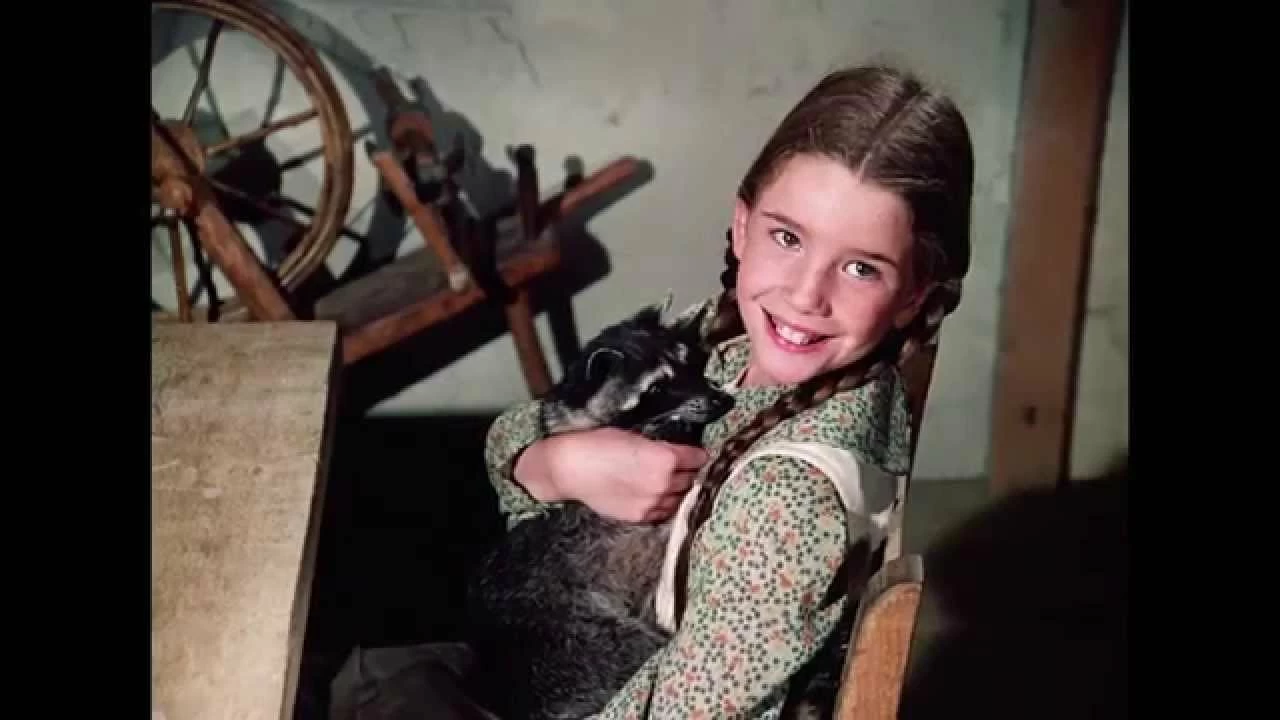
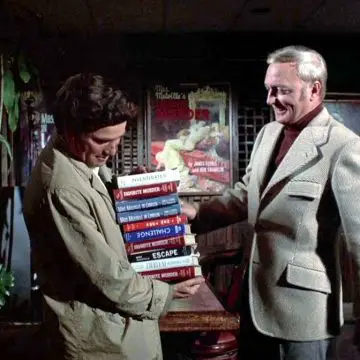
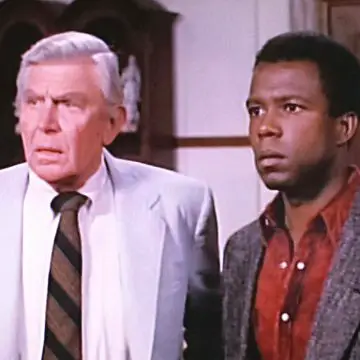
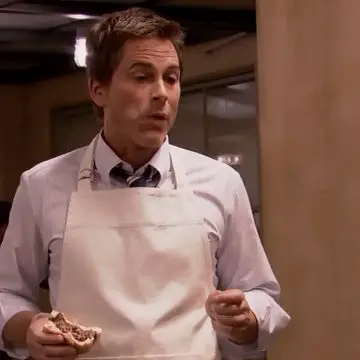
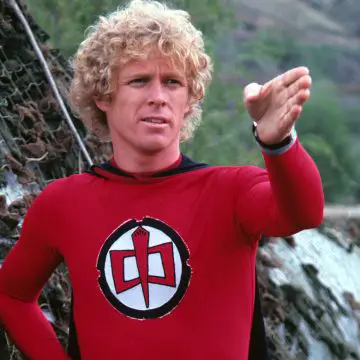
Leave a Reply